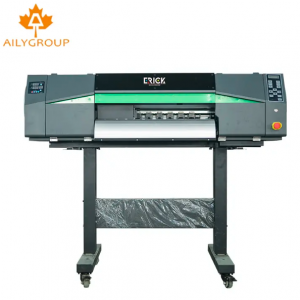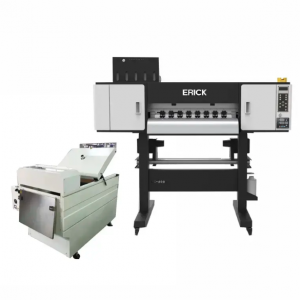Maintaining a DTF (direct to film) printer is critical to its long-term performance and ensuring high quality prints. DTF printers are widely used in the textile printing industry due to their versatility and efficiency. In this article, we'll discuss some key tips for maintaining your DTF printer.
1. Clean the printer regularly: Regular cleaning is essential to prevent ink buildup and clogged printer nozzles. Follow the manufacturer's cleaning instructions, which may involve using specific cleaning solutions or rags. Clean the printheads, ink lines, and other components according to the recommended schedule. This will help maintain printer performance and prevent print quality issues.
2. Use high-quality ink and consumables: Using inferior or incompatible inks and consumables can damage the printer and affect print quality. Always use ink and supplies recommended by the manufacturer to ensure optimum performance and longevity. These products are specially designed for printers to help maintain consistent and vibrant print results.
3. Regular print head maintenance: The print head is one of the most important components of a DTF printer. Regular maintenance keeps the printheads clean and free of debris. Use a cleaning solution or ink cartridge specifically designed for printhead cleaning to remove any dried ink or residue. Follow the manufacturer's instructions for proper maintenance of your particular printhead model.
4. Inspect and replace worn parts: Periodically inspect the printer for signs of wear. Look for loose screws, damaged cables, or worn parts that may be affecting the printer's performance. Replace any damaged or worn parts promptly to avoid further damage and maintain print quality. Keep spare parts on hand to minimize downtime and ensure uninterrupted production.
5. Maintain the correct environment: DTF printers are sensitive to environmental conditions. Place the printer in a controlled environment with stable temperature and humidity. Extreme temperatures and high humidity can affect print quality and cause component failure. Also, ensure proper ventilation to prevent ink and solvent odors from building up in the print area.
6. Updating and maintaining software: Regularly update your printer's software to ensure compatibility with the latest operating systems and to benefit from any performance improvements or bug fixes. Follow the manufacturer's software update guidelines and make sure the printer is connected to a steady power source to prevent interruptions during the software upgrade.
7. Train Operators: Properly trained operators are essential to effectively maintain and operate DTF printers. Train printer operators on how to use the printer properly and how to perform basic maintenance tasks. Provide regular training sessions to refresh their knowledge and expose them to new features or technologies.
8. Keep a maintenance log: A maintenance log to record all maintenance activities performed on the printer. This includes cleaning, parts replacement, software updates, and any troubleshooting steps taken. This log will help keep track of the printer's maintenance history, identify recurring issues and ensure maintenance tasks are performed as planned.
In conclusion, regular maintenance is essential for optimal performance and longevity of your DTF printer. By following these maintenance tips and adhering to the manufacturer's guidelines, you can ensure that your DTF printer is consistently producing high-quality prints and minimizing downtime. Prioritize cleanliness, use high-quality supplies, and keep your printer in a stable environment to maximize its efficiency and lifespan.
Post time: Jun-29-2023







